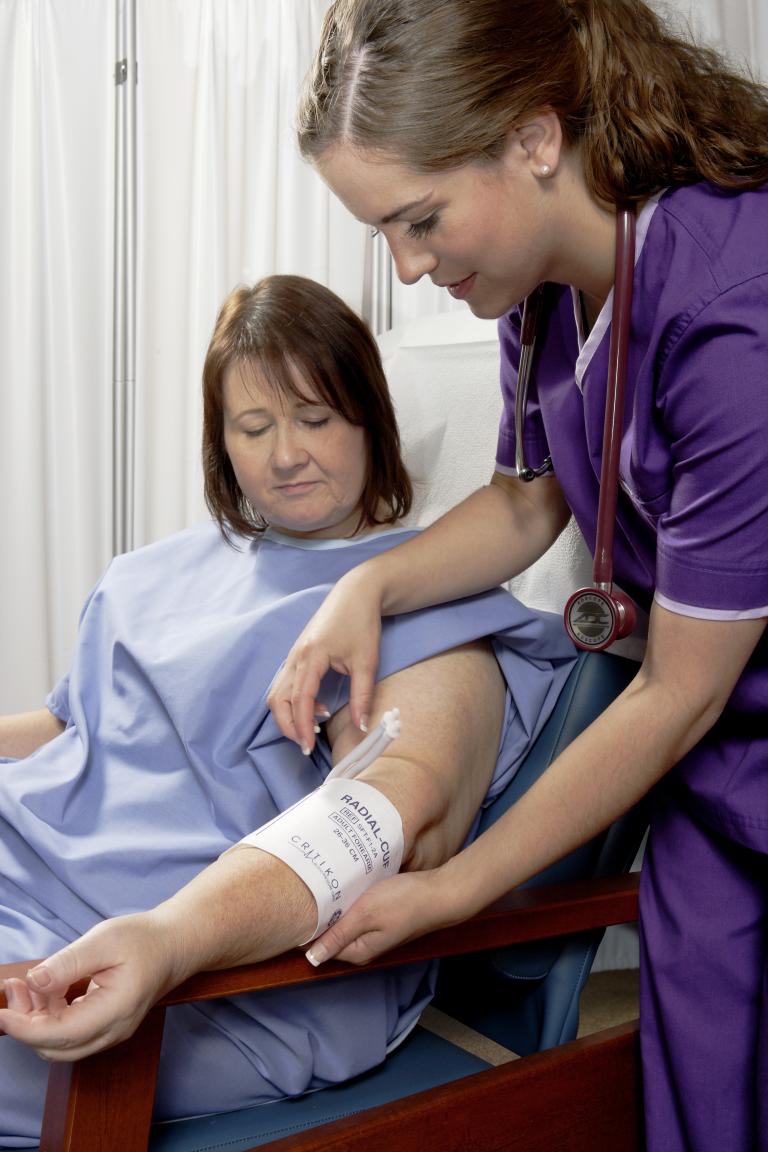
Noninvasive blood pressure (NIBP) readings during routine checkups give clinicians quick insight into patients' heart health. However, standard NIBP cuffs may not be appropriate for certain patients, such as people who are overweight, obese, or overly muscular.
Ill-fitting cuffs can lead to inaccurate NIBP readings, and even small errors can have severe consequences. For instance, over-estimating blood pressure by just 5 mmHg can lead to a diagnosis of prehypertension, when true hypertension is actually present.2 That, in turn, can lead to improper treatment, such as the prescription of an inappropriate drug that causes an adverse reaction.
The American College of Cardiology and the American Heart Association issue guidelines for proper blood pressure measurement techniques, and they include the use of cuffs correctly sized to fit each patient. Because one size does not fit all, your practice should stock the variety of cuffs needed to meet the clinical guidelines for your entire patient population. These can include conical cuffs or forearm cuffs designed for obese or especially muscular patients.
How NIBP readings can go wrong
Standard upper-arm blood pressure cuffs designed to fit essentially cylindrical arms will properly fit the majority of patients. However, for obese and muscular patients whose upper arms have a more conical shape, standard cuffs may be too small or otherwise fit poorly. Both patient types present their own special concerns.
Muscular patients
One study found that in muscular patients, a possible source of misleading measurements is an upper arm cuff that does not exert uniform pressure. Gender was a factor, as men had a higher incidence of incorrect readings than did women.4 Specifically, evidence has shown that incorrectly cuffing a muscular arm can lead to significantly erroneous NIBP readings. A high upper arm muscle mass index correlates to over-estimate of systolic blood pressure and under-estimate of diastolic blood pressure.3
Overweight and obese patients
In overweight and obese patients, the American Journal of Hypertension reports that a conical cuff generally fits the shape of the upper arm better than a standard cylindrical cuff. In a study, about 15% of severely obese patients thought to be hypertensive after measurement with a cylindrical cuff were found to be normotensive when measured with a conical cuff.6
Accurate NIBP measurement using a standard adult cuff can be especially challenging in obese women with a short humerus.5 In those patients, the end of the cuff nearest the elbow often remains loose and expands irregularly over the lower part of the arm. This can cause over-estimation, in some cases by as much as 10 mm Hg in systolic blood pressure.
Forearm Cuffs: An NIBP Innovation
While large conical upper arm cuffs provide one solution for obese and overly muscular patients, forearm cuffs provide another option. Unlike the upper arm, the circumference for the forearm remains essentially cylindrical regardless of the patient’s weight or muscle mass. This means a forearm cuff can capture pressure in the artery beneath it with minimal cuff slippage.
The CritikonTM Radial-Cuf from GE HealthCare is the first forearm NIBP cuff clinically validated and specifically designed for use on obese and overly muscular patients. Among its benefits, the Radial-Cuf:
- Can remain with a patient throughout a hospital stay, reducing the risk of infection in the event of transfer from room to room.
- Contains no DEHP or rubber latex. (Long-term exposure to DEHP can cause cancer or birth defects, and rubber latex can cause mild to severe allergic reactions in patients.)
- Is made of soft, absorbent material with rounded corners for patient comfort.
Ensuring Accuracy
Standard upper-arm blood pressure cuffs are fully suitable for many patients, but obese and muscular patients require special consideration if over- and under-estimation of blood pressure is to be avoided. A cuff inventory diversified to match the patient populations can significantly limit the risk of misdiagnoses and poor health outcomes. The optimum variety of blood pressure cuffs helps to enable consistently accurate readings and facilitate excellence in treatment.
References
[1] https://www.jacc.org/doi/10.1016/j.jacc.2017.11.006?_ga=2.197300719.175964893.1626794394-302402889.1626794394&
[2] https://www.ncbi.nlm.nih.gov/pmc/articles/PMC2911816/
[3] https://www.nature.com/articles/hr2010146
[5] https://academic.oup.com/ajh/article/32/2/139/5154669
[6] https://onlinelibrary.wiley.com/doi/epdf/10.1111/jch.13301








